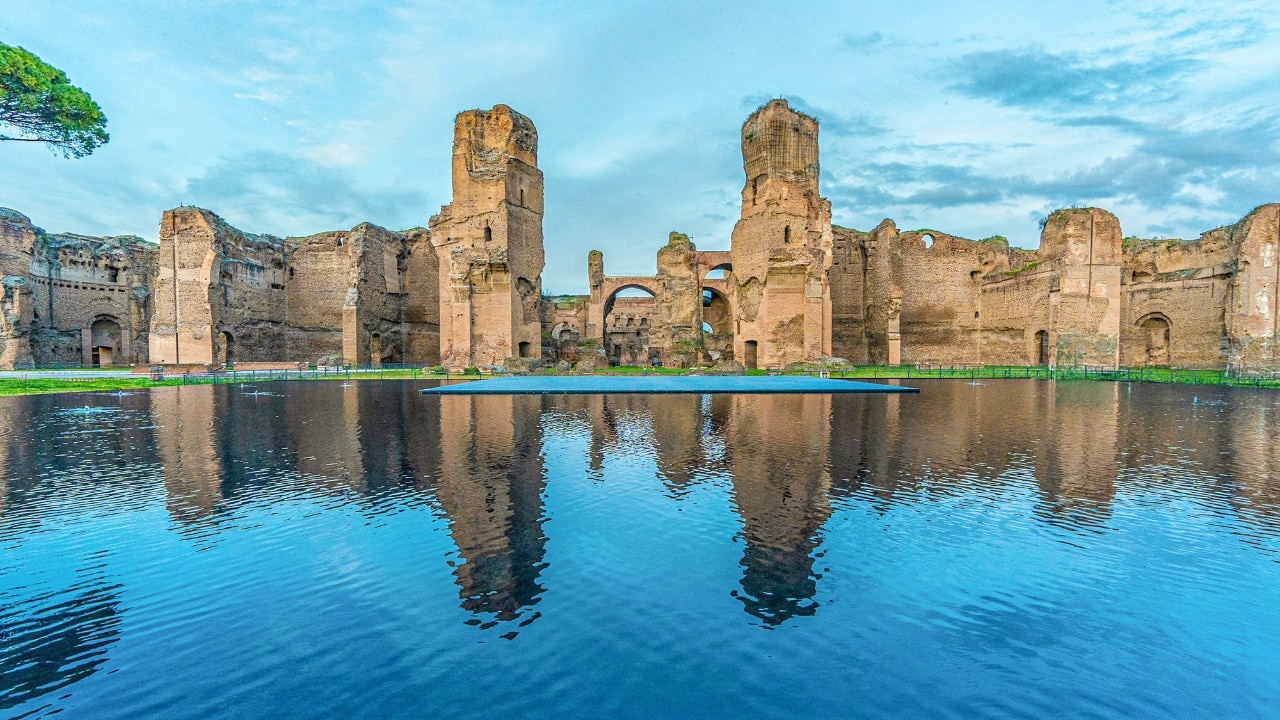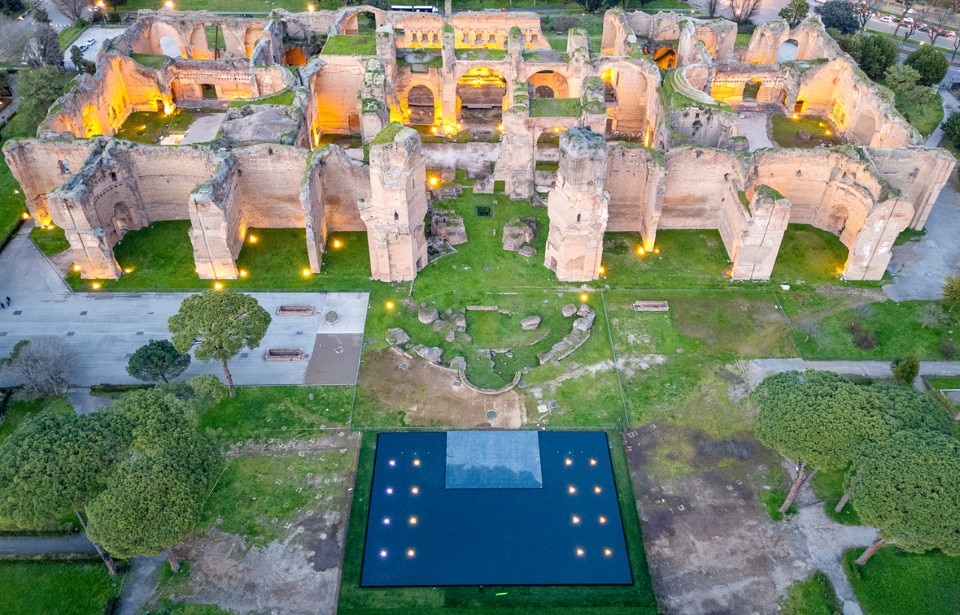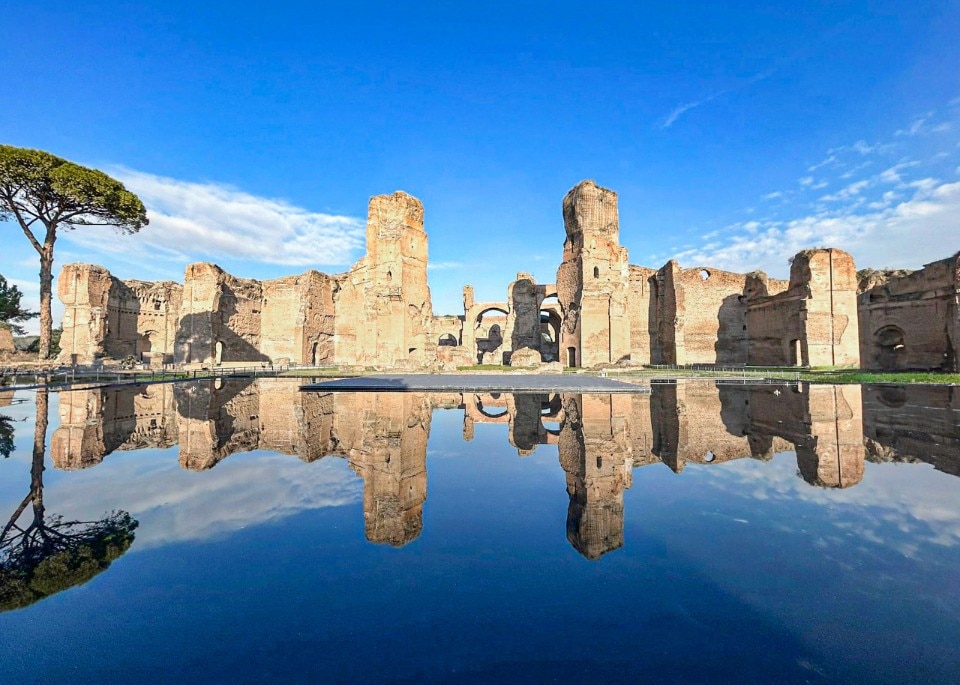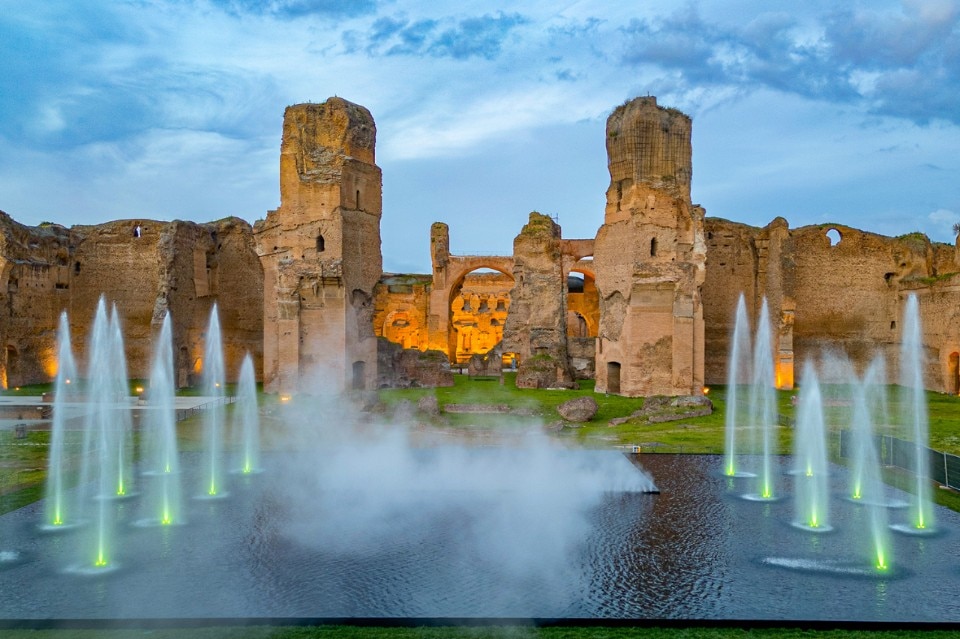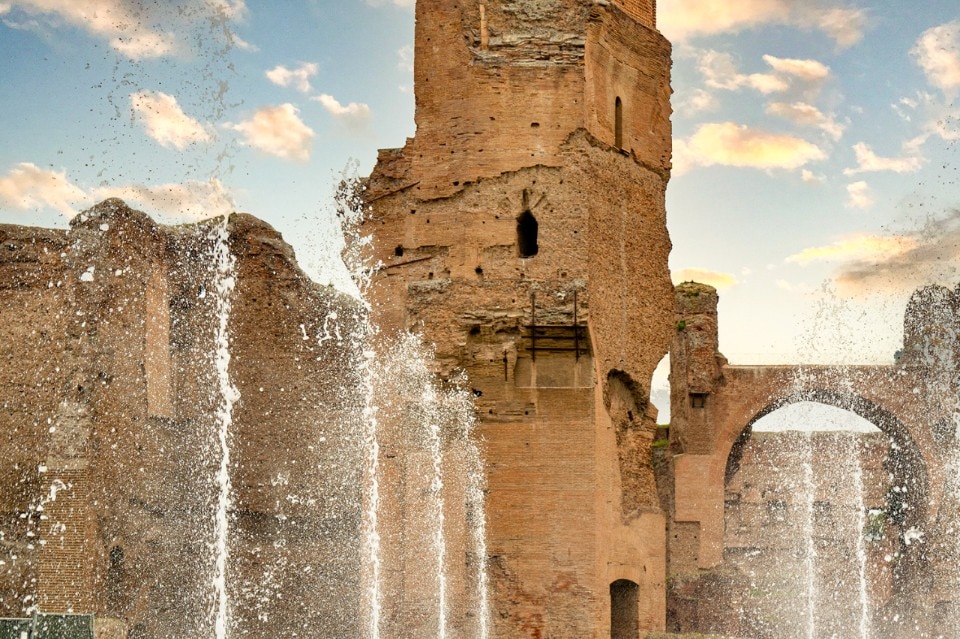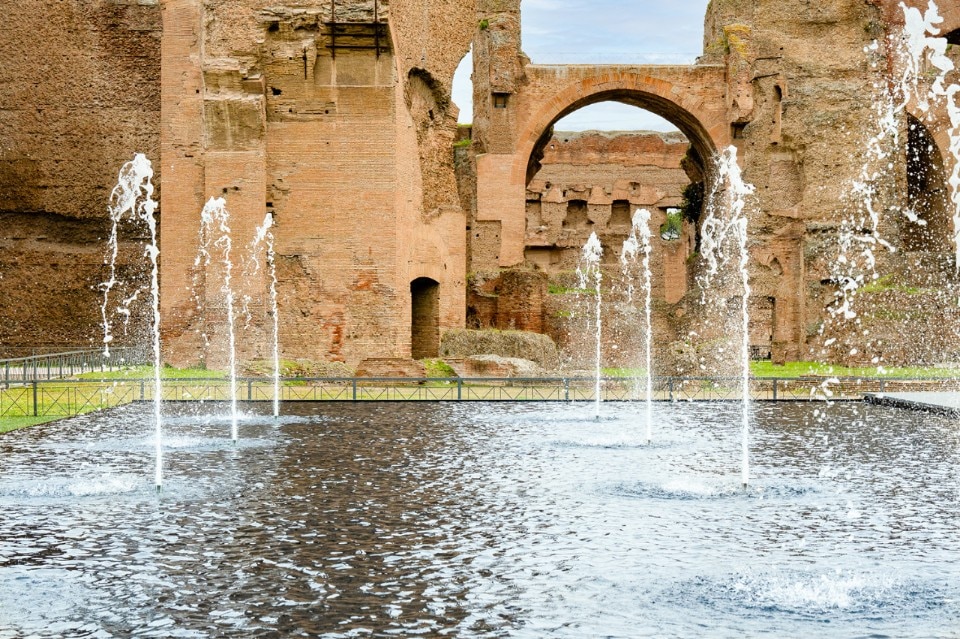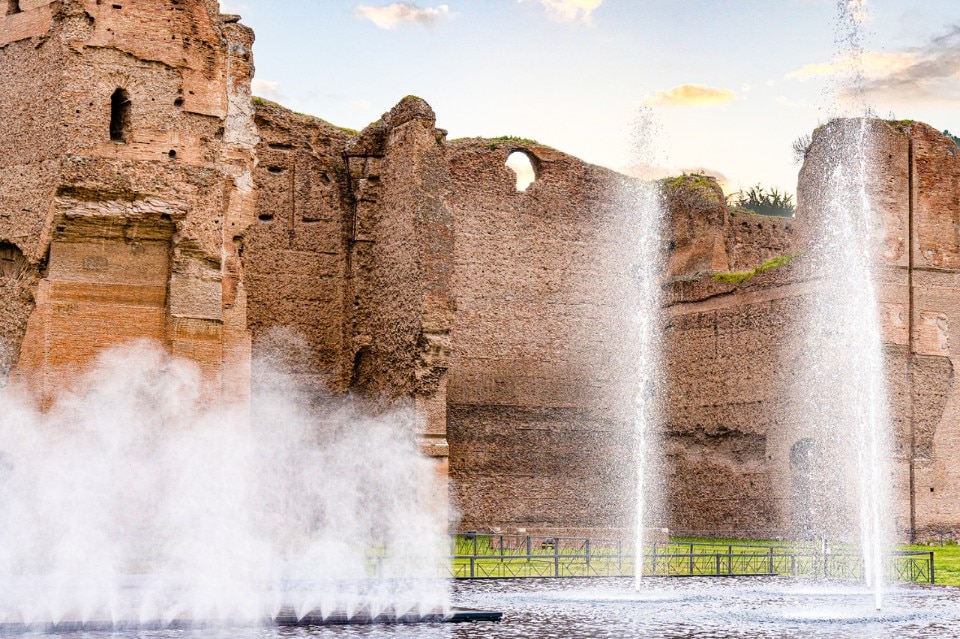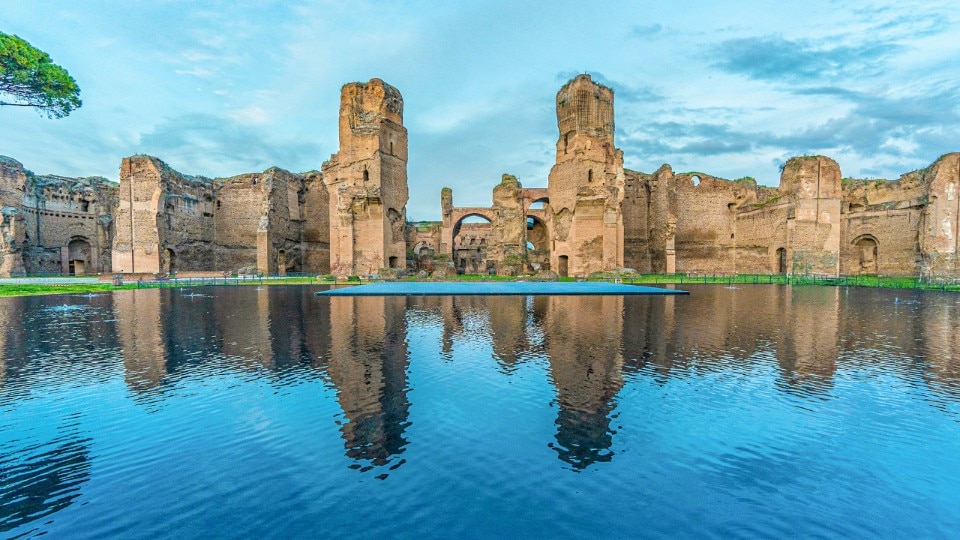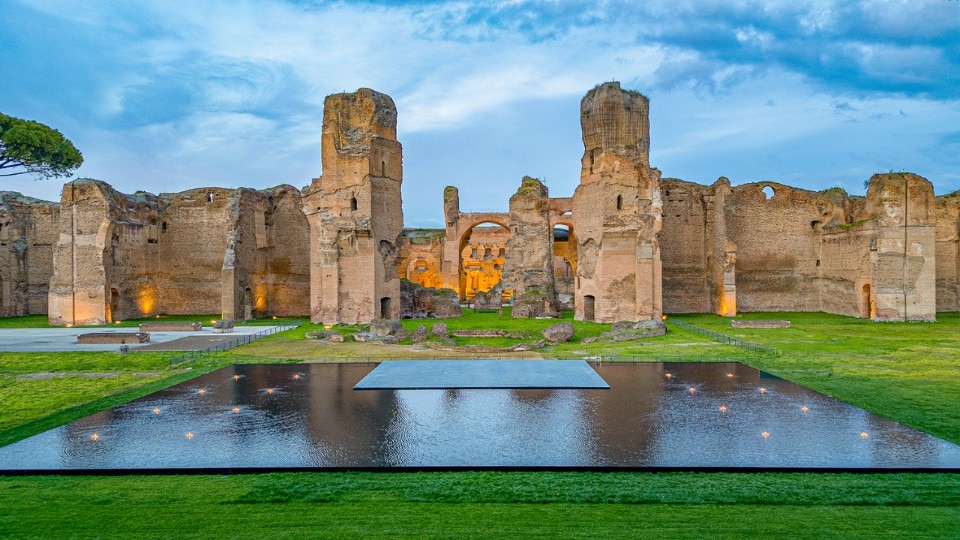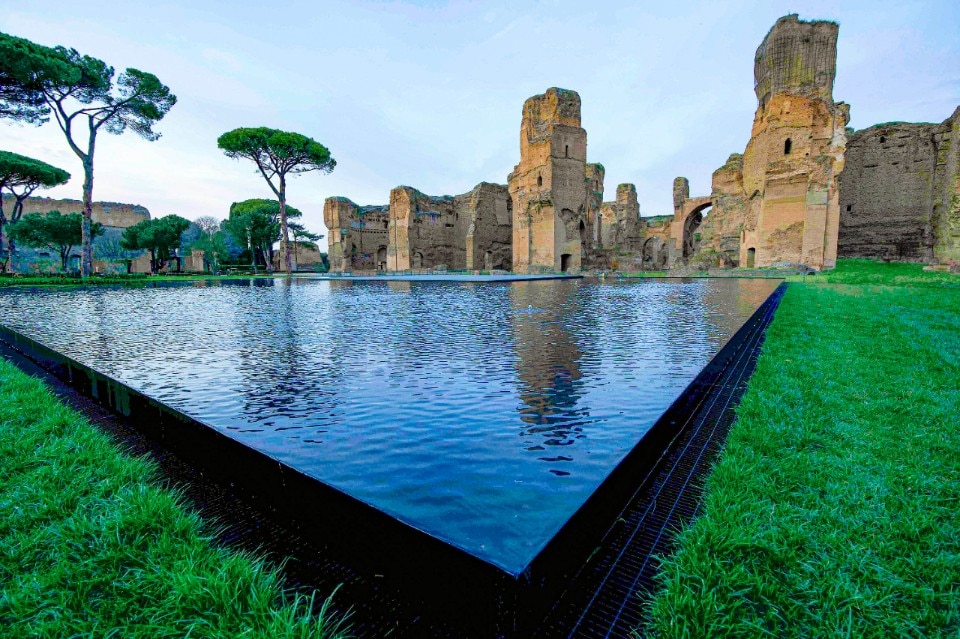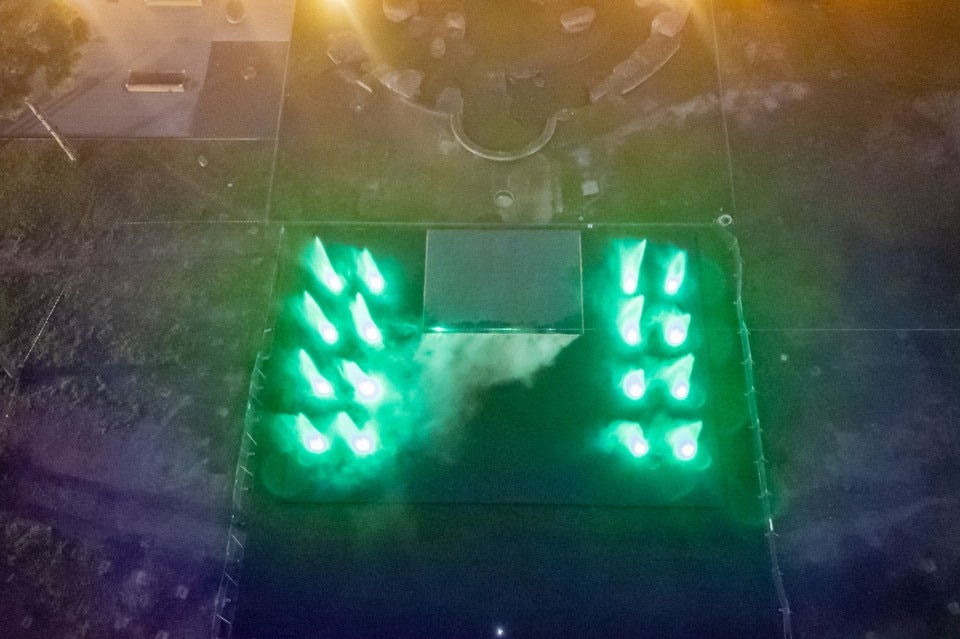After 1,800 years, water has returned to the Baths of Caracalla. A project by the Special Superintendence of Rome, led by Daniela Porro, based on an idea by Mirella Serlorenzi, has reintroduced this fundamental element into the thermal complex.
A central pool measuring 42 by 32 meters with overflowing water on three sides, called the Water Mirror, was realized by architects Hannes Peer and Paolo Bornello. The installation – only 10 centimeters high – is inspired by the Natatio, the open-air Olympic pool of ancient Rome.
The Water Mirror is not only an aesthetic wonder but aims to be a symbol of reconnection with the ancient world too. The pool will serve as a stage for artistic, performative, and cultural activities. The floor of the pool features 20 submerged water jets accompanied by lighting effects, while a harmonization system producing vapor completes the atmospheric setting.
The return of water to the Baths of Caracalla represents a significant step forward in the enhancement of an archeological site of immense historical and cultural value.
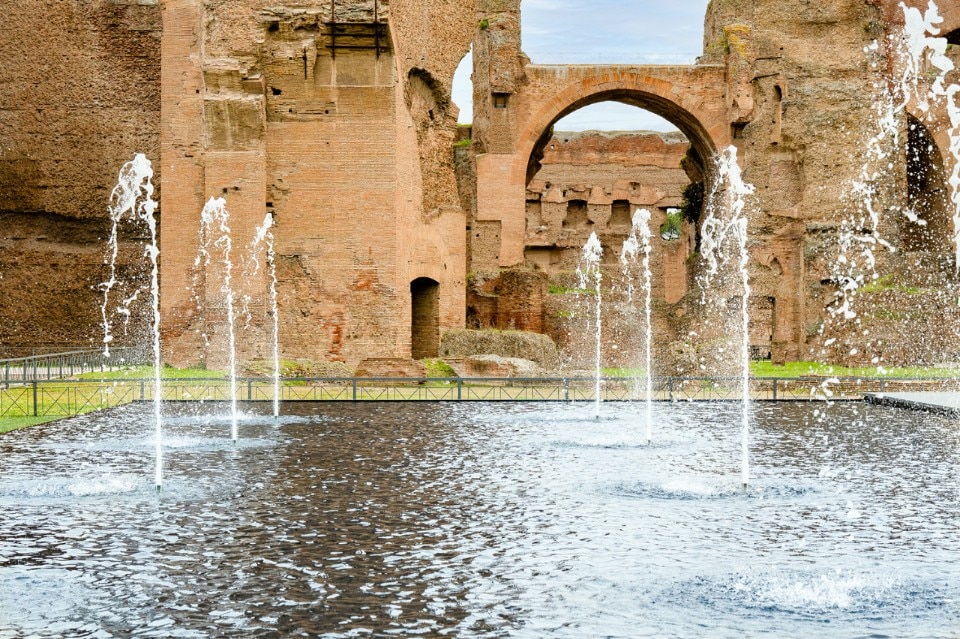
The Baths of Caracalla, commissioned by Emperor Lucius Septimius Bassianus, were the largest baths in the capital city of Rome and could accommodate up to 1,600 people. The pools were equipped with an advanced system for that time, ensuring water circulation and heating. The beauty of the complex was enhanced by sumptuous decorations, unfortunately looted in the following centuries.
The return of water to the Baths of Caracalla represents a significant step forward in the enhancement of an archeological site of immense historical and cultural value. It is an opportunity to partly relive the atmosphere of a place that was a true center of well-being and socialization for the ancient Romans.
From the enigmatic aura surrounding this historical architectural complex emerges the masterful interpretation of one of the most distinguished Dutch artists of the nineteenth century: Lawrence Alma-Tadema. From his early career, he distinguished himself with a highly personal style that skillfully blends ancient and modern elements. His works, described as encyclopedic and referential, meticulously recreate the daily life of ancient cities, drawing on a deep archaeological knowledge and careful photographic documentation.

Enchanted by the civilizations of the past, which he regarded as microcosms of glorious times, Alma-Tadema immerses us in an intimate and sumptuous dimension, showing us scenes of daily life, convivial rituals, and moments of leisure.
Despite his philological accuracy, he does not limit himself to a mere reproduction of archaeological reality but allows himself poetic licenses that blend different epochs and freely combine real and imaginary elements. His works are not illustrated manuals but rather visions of fabulous bygone eras, suspended between dream and reality.
Lawrence Alma-Tadema was a unique and visionary artist who created a pictorial world of great charm and suggestion.
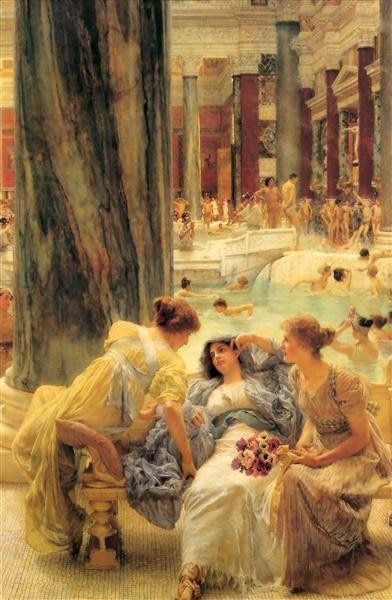
Behind the apparent archaeological rigor lies a symbolism typical of the nineteenth century. Alma-Tadema’s ancient cities, such as Pompeii or Rome, are not populated by virtuous heroes but by decadent and sensual figures immersed in an atmosphere of romantic languor. The painter celebrates hedonism and pleasure, inviting the viewer to a feast for the senses.
Alma-Tadema’s women are absolute protagonists. Enchanting and angelic yet enigmatic with their seductive gazes and sinuous bodies, they represent a veiled critique of Victorian society, which was hypocritical and puritanical.
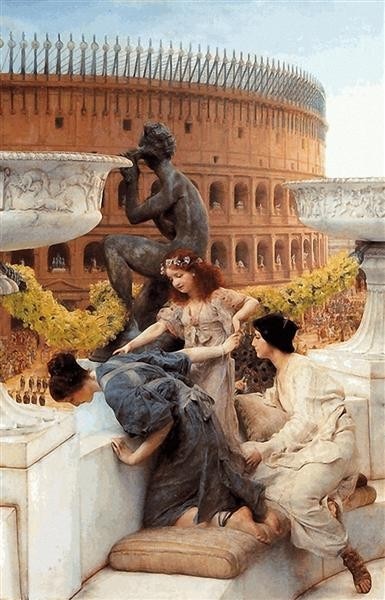
Alma-Tadema’s style garnered immense success, especially among the upper bourgeoisie who identified with the rituals and customs of ancient civilizations. His painting was described as a ‘refined dream,’ a ‘jewel’ of chiseling and engravings.
He was a master of the painting technique, with impeccable mastery of light, color, and perspective. His works are characterized by great attention to detail, from the clothing and jewelry worn by the characters to the architecture and decorations of the surroundings.
Alma-Tadema remains a controversial painter, loved for his formal beauty and criticized for the superficiality of his content. However, his work represents an important transitional moment between classicism and symbolism, offering a suggestive reinterpretation of the ancient world and a subtle critique of his contemporary society.
Ultimately, Lawrence Alma-Tadema was a unique and visionary artist who created a pictorial world of great charm and suggestion.
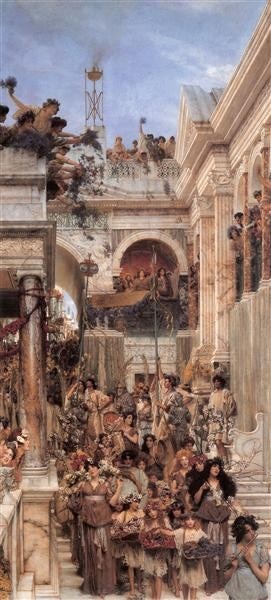
Pericle Ducati (1880-1944), an Italian archaeologist and Etruscologist, wrote:
“The famous Baths erected on a terrace southeast of the Aventine along the Appian Way are connected with the name of the wicked tyrant Caracalla (211-217). The ruins of these Baths now constitute, next to the Colosseum, the most magnificent, most gigantic testimony of Roman architectural art (...) With the grandeur of this astonishing construction was associated the richness of the interior decoration, with walls covered in marbles of various and rare qualities, with columns of marble, granite, porphyry, with distinguished statues (for example, the Farnese Bull comes from these Baths) and reliefs, with mosaic flooring, with stucco and ornaments on the ceilings.
Everything is now reduced to a bare skeleton with some parts knocked down on the ground, with others destroyed; but even so mutilating, in this desolate part of the eternal city, where the crowds once thickened and luxury was pompously pumping itself, the brown walls, which still seem to rise almost a difficult challenge in the sweet melancholy of the solitary plague, tell, to the visitor who knows how to question, the glory of the city that lived and will live through the centuries.”
Opening image: Sir Lawrence Alma-Tadema, The Baths of Caracalla, 1899


